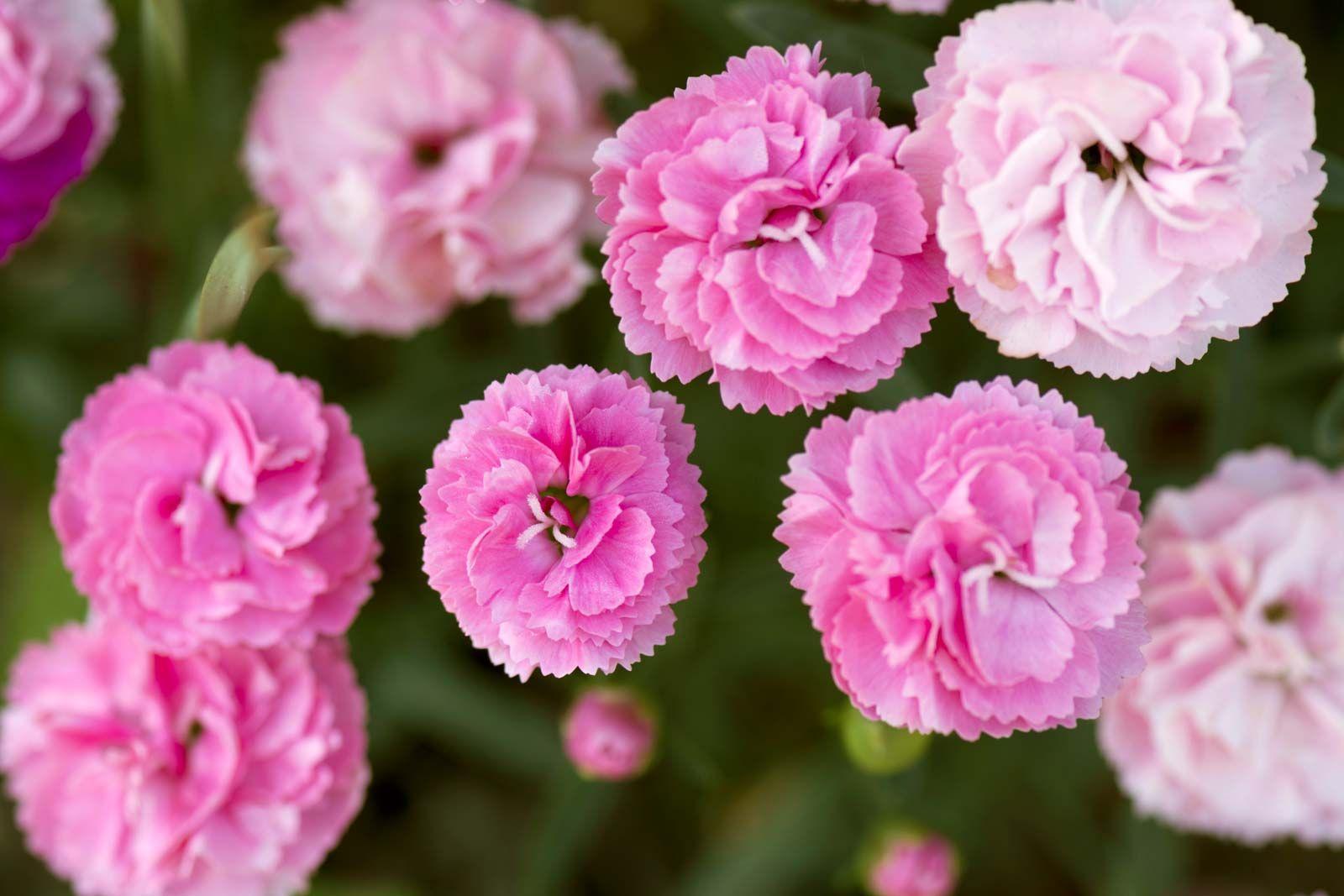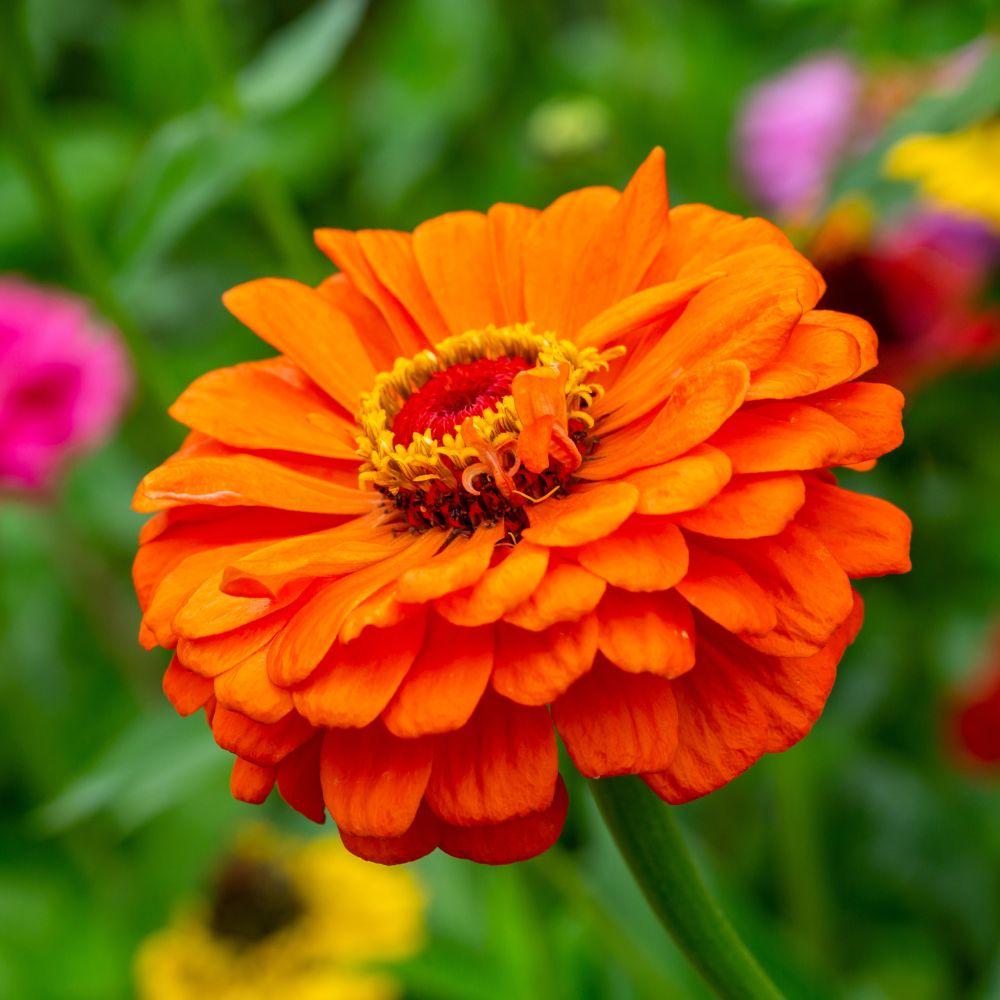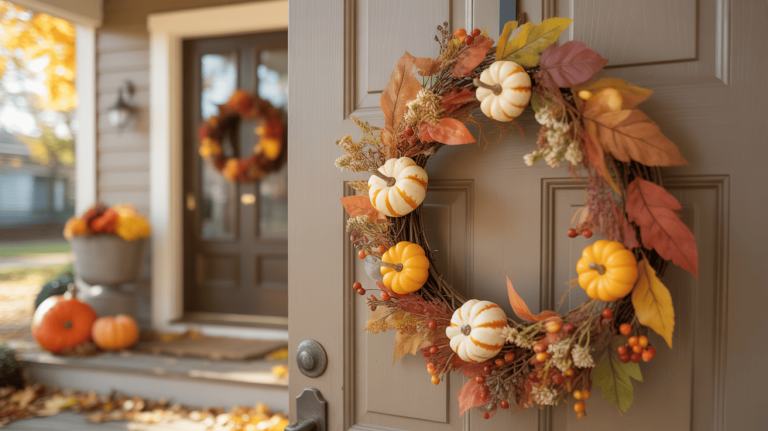35 Stunning Flower with Pictures and Their Meanings Explained

Flowers have captivated us for centuries, not only with their beauty but also with the deep symbolism they carry. From the timeless elegance of roses to the exotic allure of orchids, each bloom tells a unique story.
This guide explores 35 popular flowers, highlighting their scientific names, meanings, and interesting facts.
Whether you want to brighten your garden, express emotions, or learn about nature’s wonders, these flowers will inspire you with their charm and versatility.
Come along to discover some of the best members of the fascinating world of flowers and the messages they hold.
1. Rose

Roses are known for their vibrant, multi-layered petals and distinct fragrance. They come in various colors, from classic red to yellow, pink, and white. The flowers bloom on thorny stems, and their shape is generally round with soft, velvety petals.
- Scientific name: Rosa
- Symbolism and Meaning: Love, beauty, and passion. Different colors carry different meanings; for example, red roses represent romantic love, while white roses symbolize purity.
- Popular Varieties of the Flower: Hybrid Tea Roses, Floribunda Roses, Grandiflora Roses, Climbing Roses
Interesting Facts:
Roses are among the oldest cultivated flowers, with evidence dating back around 35 million years. Due to their strong fragrance, they are also highly prized in perfumery.
2. Tulip

Tulips have a sleek, cup-shaped bloom with a single layer of petals in various colors. They are known for their elegant, upright appearance and their ability to thrive in cooler spring climates.
- Scientific name: Tulipa
- Symbolism and Meaning: Perfect love and rebirth. Tulips often symbolize deep emotions and renewal, making them popular for springtime celebrations.
- Popular Varieties of the Flower: Darwin Hybrid Tulips, Parrot Tulips, Triumph Tulips, Lily-Flowered Tulips
Interesting Facts:
Tulip bulbs were once so valuable in the Netherlands during the 17th century that they created “Tulip Mania,” where single bulbs could be worth more than a house!
3. Sunflower

Sunflowers are famous for their large, bright yellow blooms and central brown disks. Their tall, sturdy stems and signature flowers follow the sun across the sky, a process known as heliotropism.
- Scientific name: Helianthus annuus
- Symbolism and Meaning: Loyalty, adoration, and longevity. Sunflowers often represent happiness and warmth due to their sunny appearance.
- Popular Varieties of the Flower: Giant Sunflowers, Dwarf Sunflowers, Teddy Bear Sunflowers, Autumn Beauty Sunflowers
Interesting Facts:
Sunflowers are heliotropic, meaning they face the sun as it moves across the sky. They are also known to be used in phytoremediation, helping clean up toxic soil.
4. Daisy

Daisies are simple yet charming flowers, recognizable by their white petals surrounding a bright yellow center. They are often seen in gardens and wild fields, adding a cheerful touch to any environment.
- Scientific name: Bellis perennis
- Symbolism and Meaning: Innocence, purity, and new beginnings. Daisies often represent youthful joy and fresh starts.
- Popular Varieties of the Flower: Shasta Daisy, Gerbera Daisy, African Daisy, English Daisy
Interesting Facts:
Daisies are composite flowers, meaning they are made of two flowers in one: the central disc and the surrounding petals. They are also edible and often used in salads.
5. Orchid

Orchids are exotic and elegant flowers, known for their intricate and symmetrical designs. They come in a wide range of colors, with petals often arranged in striking patterns.
- Scientific name: Orchidaceae
- Symbolism and Meaning: Luxury, beauty, and strength. Orchids are often associated with rare and delicate beauty.
- Popular Varieties of the Flower: Phalaenopsis Orchid, Dendrobium Orchid, Cymbidium Orchid, Cattleya Orchid
Interesting Facts:
Orchids have the largest variety of species in the plant kingdom, with over 25,000 species. They also have the unique ability to grow on almost any surface, including rocks and trees.
6. Lily

Lilies are large, fragrant flowers that bloom in various vibrant colors. They have six petal-like tepals and are known for their trumpet-shaped blooms.
- Scientific name: Lilium
- Symbolism and Meaning: Purity, devotion, and rebirth. Lilies are commonly associated with spiritual and eternal life.
- Popular Varieties of the Flower: Asiatic Lily, Oriental Lily, Trumpet Lily, Daylily
Interesting Facts:
Lilies are often used in weddings and funerals due to their symbolic meanings of love and loss. However, they are toxic to cats, so they should be kept out of the reach of pets.
7. Daffodil

Daffodils are bright, trumpet-shaped flowers that symbolize spring. Their vibrant yellow color makes them a favorite for early spring gardens.
- Scientific name: Narcissus
- Symbolism and Meaning: Daffodils symbolize renewal and hope. They are often seen as symbols of new beginnings and resilience.
- Popular Varieties of the Flower: Trumpet Daffodil, Double Daffodil, Miniature Daffodil, Jonquil
Interesting Facts:
In Wales, it is said that spotting the first daffodil of the season will bring wealth for the next 12 months. Daffodils are also the national flower of Wales.
8. Marigold

Marigolds are known for their bright orange or yellow blooms and have a distinctive, slightly spicy fragrance. They are widely used in festivals and gardens for their beauty and versatility.
- Scientific name: Tagetes
- Symbolism and Meaning: Marigolds symbolize passion, creativity, and remembrance. They are often used in celebrations to honor loved ones.
- Popular Varieties of the Flower: French Marigold, African Marigold, Signet Marigold, Pot Marigold
Interesting Facts:
Due to their strong scent, marigolds are often used as natural pest repellents. They are commonly planted alongside vegetables to keep insects at bay.
9. Peony

Peonies are large, lush blooms highly prized for their beauty and fragrance. They have multiple layers of soft petals and come in shades of pink, red, white, and yellow.
- Scientific name: Paeonia
- Symbolism and Meaning: Romance, prosperity, and honor. Peonies are often used in wedding bouquets as a symbol of good fortune and happy marriage.
- Popular Varieties of the Flower: Herbaceous Peony, Tree Peony, Itoh Peony
Interesting Facts:
Peonies can live for over 100 years and continue to bloom year after year without needing to be replanted, making them a symbol of longevity.
10. Carnation

Carnations are ruffled, multi-petaled flowers commonly found in floral arrangements. They come in various colors, each representing different emotions or meanings.
- Scientific name: Dianthus caryophyllus
- Symbolism and Meaning: Love, fascination, and distinction. Red carnations symbolize love, while white carnations symbolize purity and luck.
- Popular Varieties of the Flower: Spray Carnations, Large-Flowered Carnations, Dwarf Carnations
Interesting Facts:
Carnations are one of the longest-lasting cut flowers, making them ideal for bouquets and floral arrangements. They are also the official flower of Mother’s Day in the United States.
11. Lavender

Lavender is a fragrant purple flower known for its calming scent and medicinal properties. It grows in small clusters on tall, thin stems and is often used in aromatherapy and cosmetics.
- Scientific name: Lavandula
- Symbolism and Meaning: Serenity, purity, and devotion. Lavender is often associated with relaxation and peace.
- Popular Varieties of the Flower: English Lavender, French Lavender, Spanish Lavender, Lavandin
Interesting Facts:
Lavender is a natural insect repellent and is often used to keep moths out of closets. It is also one of the most popular essential oils used for promoting sleep and reducing stress.
12. Hibiscus

Hibiscus flowers are large, trumpet-shaped blooms in vibrant colors such as red, pink, orange, and yellow. Their tropical appearance makes them a favorite in warm-weather gardens.
- Scientific name: Hibiscus rosa-sinensis
- Symbolism and Meaning: Beauty, femininity, and hospitality. In many cultures, hibiscus is seen as a symbol of welcoming.
- Popular Varieties of the Flower: Hardy Hibiscus, Tropical Hibiscus, Rose of Sharon
Interesting Facts:
Hibiscus tea, made from the petals of the hibiscus flower, is a popular herbal drink known for its tart flavor and health benefits, including reducing high blood pressure.
13. Poppy

Poppies are delicate flowers with papery petals that bloom in vibrant shades of red, orange, and yellow. The central pod of the flower contains numerous seeds, making it a symbol of fertility and remembrance.
- Scientific name: Papaver
- Symbolism and Meaning: Remembrance, peace, and eternal sleep. Poppies are often used to symbolize memory and rest, especially in connection with World War I.
- Popular Varieties of the Flower: Oriental Poppy, Iceland Poppy, California Poppy, Corn Poppy
Interesting Facts:
Poppy seeds are used in cooking and baking, often sprinkled on breads and pastries. In several countries, the poppy flower is also the emblem of Remembrance Day.
14. Chrysanthemum

Chrysanthemums, or mums, are popular autumn flowers with large, full blooms in various colors, including yellow, red, purple, and white. They are often used in garden beds and floral displays.
- Scientific name: Chrysanthemum
- Symbolism and Meaning: Longevity, joy, and fidelity. In many cultures, chrysanthemums are associated with happiness and long life.
- Popular Varieties of the Flower: Garden Mum, Spider Mum, Football Mum, Pompon Mum
Interesting Facts:
Chrysanthemums have been cultivated in China for over 2,500 years. In Japan, the flower symbolizes the emperor and the imperial family.
15. Geranium

Geraniums are popular garden flowers known for their five-petal blooms and vibrant colors, such as red, pink, and white. They are easy to grow and often used in window boxes and hanging baskets.
- Scientific name: Pelargonium
- Symbolism and Meaning: Friendship, happiness, and good health. Geraniums are often used to symbolize positive emotions and well-being.
- Popular Varieties of the Flower: Zonal Geranium, Ivy Geranium, Regal Geranium, Scented Geranium
Interesting Facts:
Some species of geraniums have a strong, pleasant fragrance and are used in making essential oils. They are also believed to have mosquito-repelling properties.
16. Iris

Irises are tall, elegant flowers with sword-like leaves and large, showy blooms. They come in various colors, with purple, blue, and yellow being the most common.
- Scientific name: Iris
- Symbolism and Meaning: Wisdom, courage, and faith. Irises are often associated with royalty and valor.
- Popular Varieties of the Flower: Bearded Iris, Siberian Iris, Dutch Iris, Japanese Iris
Interesting Facts:
The iris flower was named after the Greek goddess Iris, who was believed to be the messenger of the gods. The iris flower symbolizes the connection between heaven and earth, and the fleur-de-lis symbol is based on its shape.
17. Jasmine

Jasmine flowers are small, white, or yellow. They have an intoxicating fragrance that becomes more intense at night. Jasmine is commonly used in perfumes and teas.
- Scientific name: Jasminum
- Symbolism and Meaning: Love, beauty, and sensuality. Jasmine is often associated with romantic and spiritual love.
- Popular Varieties of the Flower: Common Jasmine, Arabian Jasmine, Winter Jasmine, Star Jasmine
Interesting Facts:
Jasmine is known for its nighttime fragrance, which intensifies after dusk. It is also used in traditional teas, such as jasmine tea, which is highly popular in China and other Asian countries.
18. Hydrangea

Hydrangeas are large, globe-shaped blooms in pastel colors such as pink, blue, and white. They are often found in gardens and floral arrangements.
- Scientific name: Hydrangea macrophylla
- Symbolism and Meaning: Gratitude, abundance, and heartfelt emotions. Hydrangeas are often used to express gratitude and understanding.
- Popular Varieties of the Flower: Mophead Hydrangea, Lacecap Hydrangea, Panicle Hydrangea, Oakleaf Hydrangea
Interesting Facts:
The color of hydrangea flowers can change depending on the soil’s pH level. Acidic soil produces blue blooms, while alkaline soil results in pink blooms.
19. Magnolia

Magnolias are large, fragrant flowers that bloom on trees and shrubs. They come in a range of colors, including white, pink, and purple, and have glossy, leathery leaves.
- Scientific name: Magnolia
- Symbolism and Meaning: Dignity, nobility, and perseverance. Magnolias are often associated with beauty and strength due to their large, sturdy blossoms.
- Popular Varieties of the Flower: Southern Magnolia, Star Magnolia, Saucer Magnolia, Sweetbay Magnolia
Interesting Facts:
Magnolias are one of the oldest types of flowers, with fossils dating back over 100 million years. They evolved before bees and are pollinated by beetles.
20. Zinnia

Zinnias are bright, daisy-like flowers that come in a wide array of colors, from red and pink to yellow and orange. They are easy to grow and add vibrant color to gardens and landscapes.
- Scientific name: Zinnia elegans
- Symbolism and Meaning: Endurance, lasting friendship, and remembrance. Zinnias are often associated with steadfastness due to their long-lasting blooms.
- Popular Varieties of the Flower: Zinnia Profusion, Zinnia Elegans, Zinnia Zahara, Cactus-Flowered Zinnia
Interesting Facts:
Zinnias are known for their long blooming period, often lasting from late spring until the first frost. They are also highly attractive to butterflies.
21. Begonia

Begonias are versatile plants known for their brightly colored flowers and decorative foliage. They are popular in gardens, containers, and hanging baskets.
- Scientific name: Begonia
- Symbolism and Meaning: Caution, gratitude, and individuality. Begonias are often given as a symbol of warning or protection.
- Popular Varieties of the Flower: Wax Begonia, Tuberous Begonia, Rex Begonia, Angel Wing Begonia
Interesting Facts:
Some begonia varieties have striking, patterned leaves that are just as attractive as the flowers. They are also grown indoors as houseplants due to their low light requirements.
22. Calla Lily

Calla lilies are elegant flowers with trumpet-shaped blooms and smooth, waxy petals. They are often used in formal floral arrangements and are prized for their simplicity and beauty.
- Scientific name: Zantedeschia
- Symbolism and Meaning: Purity, faith, and rebirth. Calla lilies are commonly associated with holiness and new beginnings, making them popular in weddings and funerals.
- Popular Varieties of the Flower: White Calla Lily, Pink Calla Lily, Black Calla Lily, Yellow Calla Lily
Interesting Facts:
Despite their name, calla lilies are not true lilies. They are native to South Africa and thrive in warm, sunny environments.
23. Dahlia

Dahlias are bold, dramatic flowers with multiple layers of petals that come in a variety of colors and sizes. They are known for their intricate, almost geometric blooms.
- Scientific name: Dahlia
- Symbolism and Meaning: Elegance, inner strength, and creativity. Dahlias are often given as a symbol of grace and dignity.
- Popular Varieties of the Flower: Dinner Plate Dahlia, Cactus Dahlia, Pompon Dahlia, Ball Dahlia
Interesting Facts:
Dahlias can grow as large as a dinner plate, with some varieties producing blooms up to 12 inches in diameter. They are the national flower of Mexico.
24. Camellia

Camellias are evergreen shrubs with large, showy blooms that come in shades of pink, red, and white. Their glossy, dark green leaves provide a stunning contrast to their delicate flowers.
- Scientific name: Camellia japonica
- Symbolism and Meaning: Admiration, perfection, and devotion. Camellias are often used to convey deep feelings of love and affection.
- Popular Varieties of the Flower: Japanese Camellia, Sasanqua Camellia, Winter Camellia
Interesting Facts:
Camellia flowers are highly prized in China and Japan, where they have been cultivated for centuries. The leaves of certain camellia varieties are used to produce tea.
25. Gladiolus

Gladiolus flowers grow on tall spikes and feature funnel-shaped blooms in a wide range of colors. Their height and striking appearance make them popular in cut flower arrangements.
- Scientific name: Gladiolus
- Symbolism and Meaning: Strength, integrity, and remembrance. Gladiolus flowers are often given to represent moral strength and honor.
- Popular Varieties of the Flower: Grandiflora Gladiolus, Nanus Gladiolus, Primulinus Gladiolus
Interesting Facts:
The name “gladiolus” comes from the Latin word for “sword,” due to the flower’s tall, blade-like leaves. Gladiolus flowers are sometimes referred to as “sword lilies.”
26. Sweet Pea

Sweet peas are climbing flowers with delicate, ruffled petals and a lovely fragrance. They come in a variety of soft pastel shades, making them popular in cottage gardens.
- Scientific name: Lathyrus odoratus
- Symbolism and Meaning: Blissful pleasure and gratitude. Sweet peas are often given as a thank-you or as a symbol of appreciation.
- Popular Varieties of the Flower: Cupani Sweet Pea, Spencer Sweet Pea, Knee-Hi Sweet Pea
Interesting Facts:
Sweet peas are known for their lovely fragrance and are often grown specifically for their scent. They are frequently used in perfumes and scented products.
27. Anemone

Anemones are delicate, cup-shaped flowers that bloom in vibrant shades of red, purple, and white. Their dainty appearance and bold colors make them a favorite in floral arrangements.
- Scientific name: Anemone
- Symbolism and Meaning: Protection, anticipation, and fleeting moments. Anemones are often associated with the fragility and brevity of life.
- Popular Varieties of the Flower: Japanese Anemone, Wood Anemone, Poppy Anemone
Interesting Facts:
Anemones are sometimes called “windflowers” because the name comes from the Greek word for wind, “anemos.” This refers to believing that the wind would blow open their delicate petals.
28. Bluebell

Bluebells are small, bell-shaped flowers that form in clusters on arching stems. Their vibrant blue color creates a stunning visual when they bloom en masse in woodlands.
- Scientific name: Hyacinthoides non-scripta
- Symbolism and Meaning: Humility, gratitude, and everlasting love. Bluebells are often associated with the feeling of peace and serenity.
- Popular Varieties of the Flower: English Bluebell, Spanish Bluebell, Virginia Bluebell
Interesting Facts:
Bluebells are considered an indicator of ancient woodlands, as they can take years to establish in their environment. In folklore, bluebells were said to summon fairies when rung.
29. Cosmos

Cosmos are daisy-like flowers with broad petals and vibrant colors, including pink, red, and white. They are known for their airy, delicate appearance and ability to attract pollinators.
- Scientific name: Cosmos bipinnatus
- Symbolism and Meaning: Harmony, peace, and love. Cosmos flowers represent the orderly beauty of the universe.
- Popular Varieties of the Flower: Cosmos Sensation, Chocolate Cosmos, Sea Shells Cosmos
Interesting Facts:
Cosmos flowers are easy to grow and are often found in wildflower gardens. The chocolate cosmos variety actually has a light chocolate scent!
30. Forget-Me-Not

Forget-me-nots are small, delicate flowers with five bright blue petals and a yellow center. They are often found growing in moist, shaded areas and are treasured for their charm.
- Scientific name: Myosotis
- Symbolism and Meaning: Remembrance, loyalty, and eternal love. Forget-me-nots are given to express enduring connection and memories.
- Popular Varieties of the Flower: Woodland Forget-Me-Not, Alpine Forget-Me-Not, Field Forget-Me-Not
Interesting Facts:
The legend of the forget-me-not flower dates back to medieval times, where it is said that a knight, while picking flowers for his lady, fell into a river. As he drowned, he threw the flowers to her and shouted, “Forget me not!”
31. Gardenia

Gardenias are fragrant, creamy-white flowers with glossy, dark green leaves. They are often used in perfumes and are prized for their beauty and intoxicating scent.
- Scientific name: Gardenia jasminoides
- Symbolism and Meaning: Purity, love, and refinement. Gardenias symbolize secret love and are often given to express admiration.
- Popular Varieties of the Flower: Cape Jasmine, Frostproof Gardenia, Radicans Gardenia
Interesting Facts:
Gardenias are extremely sensitive to temperature changes and can be difficult to grow indoors. However, their strong fragrance makes them a popular choice for floral arrangements and perfumes.
32. Snapdragon

Snapdragons are tall, colorful flowers that grow in dense spikes and are known for their dragon-shaped blooms, which can be “snapped” open and closed.
- Scientific name: Antirrhinum majus
- Symbolism and Meaning: Strength, grace, and deception. In the Victorian language of flowers, snapdragons were sometimes associated with concealment.
- Popular Varieties of the Flower: Rocket Snapdragon, Sonnet Snapdragon, Madame Butterfly Snapdragon
Interesting Facts:
Snapdragons can bloom throughout the cooler seasons, making them a popular choice for fall and early spring gardens. The flower’s shape is thought to resemble a dragon’s mouth, hence the name “snapdragon.”
33. Petunia

Petunias are funnel-shaped flowers that come in a wide variety of colors and patterns. They are commonly used in gardens and hanging baskets for their vibrant blooms and versatility.
- Scientific name: Petunia
- Symbolism and Meaning: Resentment and anger, but also comfort. Depending on the situation, petunias can symbolize a range of emotions, often tied to the recipient’s feelings.
- Popular Varieties of the Flower: Grandiflora Petunia, Multiflora Petunia, Wave Petunia
Interesting Facts:
Petunias are related to tobacco, as both belong to the nightshade family. Some petunia varieties have fragrant blooms, especially at night.
34. Freesia

Freesias are fragrant, bell-shaped flowers that grow in clusters along one side of a stem. They come in various colors, including yellow, white, pink, and purple, and are known for their sweet scent.
- Scientific name: Freesia
- Symbolism and Meaning: Freesias symbolize innocence, friendship, and trust. They are often given to celebrate friendships and show appreciation.
- Popular Varieties of the Flower: Single Freesia, Double Freesia, Freesia Refracta
Interesting Facts:
Freesias are a popular choice for bridal bouquets due to their sweet fragrance and delicate appearance. They are also used in many perfumes and scented candles.
35. Aster

Asters are daisy-like flowers with star-shaped blooms in various colors, including purple, blue, white, and pink. They are often used in borders and bouquets.
- Scientific name: Aster amellus
- Symbolism and Meaning: Love, patience, and elegance. Asters are often given to symbolize affection and appreciation.
- Popular Varieties of the Flower: New England Aster, China Aster, Smooth Aster
Interesting Facts:
The name “aster” comes from the Greek word for “star,” referring to the shape of the flower. Asters are known for their long-lasting blooms and are often used in late-summer gardens.
End Note
Understanding the symbolism and characteristics of flowers can deepen our appreciation for the natural world.
These 35 flowers not only add beauty to our surroundings but also offer meaningful ways to communicate love, hope, and strength.
Whether cultivating your garden or choosing flowers for a special occasion, knowing the stories behind these blooms adds an extra layer of significance.
Let these flowers inspire you to bring more beauty and meaning to your life and space.






